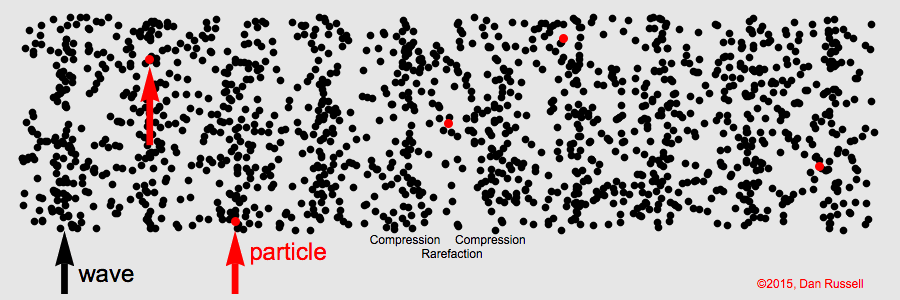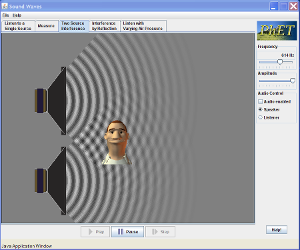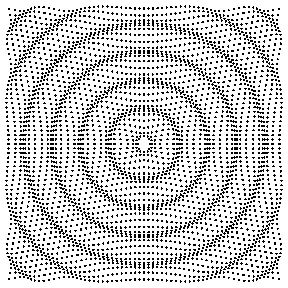PH 212
Sound waves
Sound waves are longitudinal waves, consisting of compressions and rarefactions that carry the signal through a solid, liquid or gas.
Sound waves propagate out in a spherical pattern from the source. Increasing the amplitude of the wave makes the sound louder. Increasing the frequency of the wave makes the pitch higher.
The range of human hearing is about 20 Hz to 20 kHz.
freemosquitoringtones.org/hearing_test/
When you hear a sound, the oscillating source produces a compression wave that propagates through the air (vsound = 343 m/s) to your eardrum, producing vibrations on your eardrum that your brain interprets.
What is the wavelength of a 20 Hz sound wave?
Practice problem: A sound source is located along the x-axis. Two listeners at x = -7.0 m and x =+3.0 m detect the same wavefront simultaneously. Where is the source?
A third listener sits somewhere along the positive y-axis, and detects the same wavefront simultaneously with the first two. What is her y-coordinate?




Animation courtesy of Dr. Dan Russell, Grad. Prog. Acoustics, Penn State